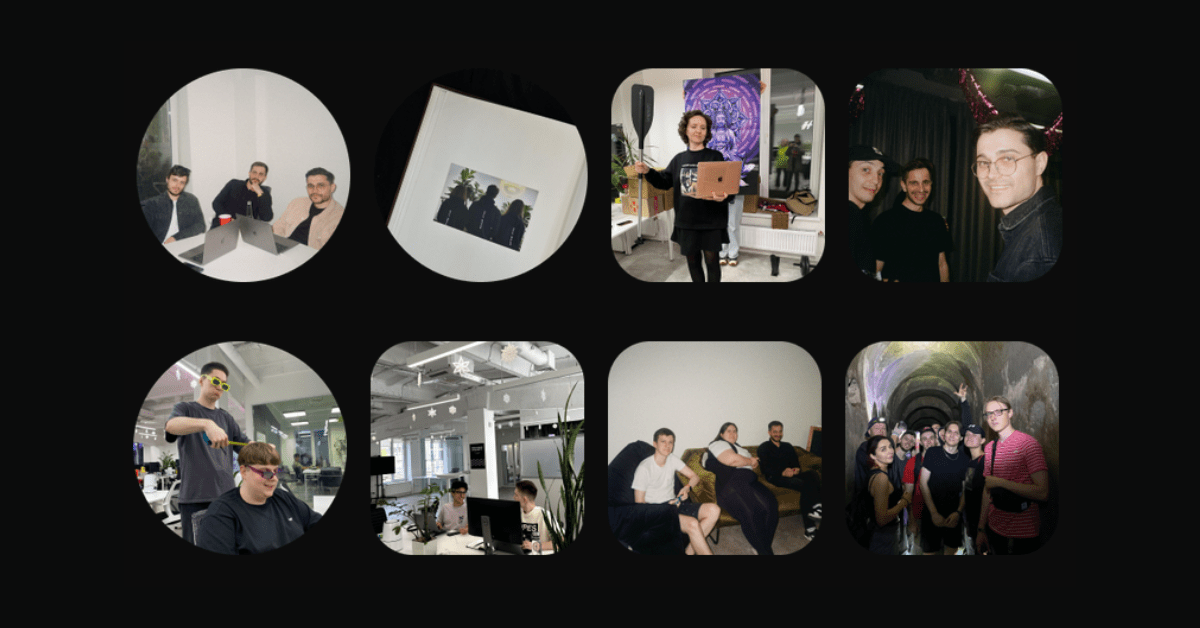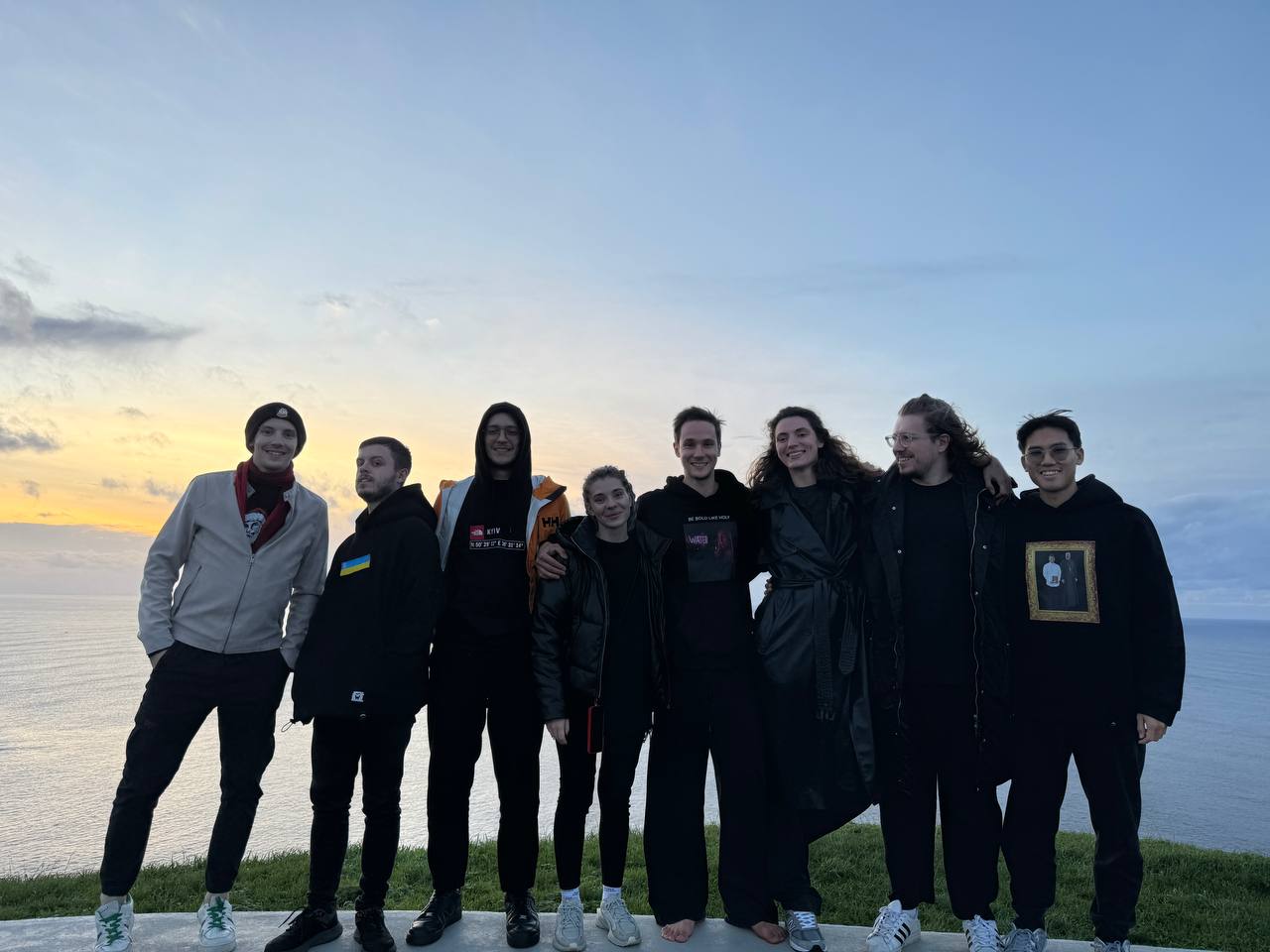My first product was a live wallpaper for iPhones. Sounds like a billion-dollar idea, right? Well, I’m kidding. For sure, it wasn’t. Realising this quite quickly, I experimented a lot with products, business approaches, operational activities, and priorities.
That’s what a lot of entrepreneurs did. Netflix started as a DVD rental service, Instagram as a check-in app, and Amazon began as an online retailer of physical books.
I am also among those who are not afraid of pivoting. After four years of testing different business models, I am developing a successful mediatech company, HOLYWATER, which grew from 0 to $90M ARR. That’s 9 times higher than the average ARR of startups in this period!
By the way, we did not attract external investments, survived several crises, and now, as a Ukrainian startup, we are operating in wartime.
Here’s how I’ve built startup operations at each stage to achieve that growth.
Money first, spreadsheets later
It all started with $100k. Along with my co-founder, Anatolii Kasianov, we assembled a team of 7 people to cover development, design, and marketing. That was enough to begin making apps.
Live wallpapers, custom fonts, video editors, and even a prayer app — we just watched market trends and generated apps.
Our schedule was brutal — 14-hour days, 6 days a week. At no point did I force the team to work so hard. Rather, Anatolii and I succeeded in communicating the idea’s value and energising the team with my hard-working example. We made it crystal clear to everyone: it’s possible to hit $100K in monthly revenue in the near future. We nailed that goal by the third month, and by the ninth month, we reached $1M in monthly revenue.
But here’s the thing about rapid growth — it breeds chaos.
When we reached 40 people, we struggled to manage our expanding operations effectively. Then, we realized we had to work on our processes.
Assign areas of responsibility

In a small startup, everyone is responsible for everything.
In the beginning, this helps, but if you don’t stop in time, it will ruin the company. At some point, I noticed collective irresponsibility in our startup. The number of applications was growing, and there was a struggle for resources.
Previously, many people were responsible for each product: marketing, creative, analytics, and product teams. This sometimes led to finger-pointing, with people saying, ‘I didn’t reach my goal because we didn’t have enough creatives.’ It was clear we needed a change.
To fix this, we implemented the RACI matrix. For each task, employees are assigned specific roles (Responsible, Accountable, Consulted, and Informed). For instance, if the task is to launch a product, the Responsible is the developer, and the Accountable is the sales manager.
Each product got a single entry point, one person responsible for the final result — the product manager. If user acquisition didn’t work well, I’d ask the product manager what was happening rather than dealing with multiple teams.
This approach worked. When the whole product team shared one goal, everyone started challenging each other more because goal completion was dependent on everyone. Each product now had a leader whom I could ask for financial results. I didn’t need to dive into processes in detail anymore — that was the product manager’s responsibility.
Make strategic bets
After stable revenue growth and established processes in the team, it was time to move on to a focus setting. At first, we tried to prioritise using the ICE scoring system to assess the impact of features, evaluating Impact, Confidence, and Ease. But we quickly realised that we were scoring intuitively, which didn’t work for us.
Then we took a Lean Product Management course by Itamar Gilad, a senior product manager from Google, Microsoft and other companies. We opened our eyes to a whole new world of product strategy. For instance, discovered the GIST framework for planning, where each letter stands for the following:
G – Goal. In our case, it’s “Become the top 1 in a niche”.
I – Ideas to achieve the Goal. For instance, to increase conversion to subscriptions and the number of purchases.
S – Steps. We wrote that we must research the audience to understand what distinguishes the audience that reads the most and create more content.
T –– Tasks. For example, to contact authors about cooperation

At that point, we had two focuses: creating and developing apps and working on content and media tech products. The apps brought in good money, which we invested in unprofitable but promising content products. But I knew this strategy wouldn’t work in the long term.
So, in 2022, I made a call that probably seemed insane to everyone else. We stopped working on new apps. Why? Because our goal is to become a unicorn, and it’s impossible with random apps. We sold all old apps to the Israeli company for more than $1M and put all our efforts into content and mediatech products.
Focus on gross profit, not revenue
$1 million in monthly revenue sounds ok. But if you spend $999,999 to get it, you’re just a hamster running in his wheel, not a successful entrepreneur (although some startups burning VC money think otherwise).
Gross profit tells you what you’re retaining after deducting marketing costs from your revenue. Trying to save a startup from war-related crises, I shifted our focus to gross profit growth without thinking about revenue. I had to lay off 40% of the team, and with the rest, we started working much more intensely to make real money.
My strategy to achieve this was:
-
- Overcommunication. I constantly, even more than necessary, communicated with the team and explained what we were doing and why. Today, you can wake up any team member at 3 AM, and he will tell you that our goal is to earn 10 million gross profit this year.
- Eliminate non-profitable marketing channels. We turned off all low-margin marketing grids where we were buying traffic and focused only on profitable ones.
- Product focus on monetization. If earlier we designed many features, now all A/B tests were aimed at answering whether they would bring us money or not.
- Creative revolution. In digital marketing, sometimes you have to push boundaries to increase profits. So, we poured resources into crafting irresistibly clickable creatives, even if it required adding some spice like cleavage. We also launched the Creative Factory, increasing the number of creatives for testing by 10x.
Introduce alignment sessions
Unlike standard strategic sessions, which often focus solely on goal-setting, alignment sessions take a holistic approach to synchronising vision, strategy, and execution across all levels of the organisation. That’s what it looks like.
Once a year, the C-level brings together to synchronise our company strategy. We dedicate 3-4 days to this process, completely disconnecting from daily operations to focus solely on planning. During this session, we allocate each day to discussing each section in detail — books, interactive stories, and video series.
Then, it’s time to introduce our vision to team leaders. To ensure everyone is “on the same page,” I create a detailed presentation that encompasses our focus, objectives, competitive landscape, and rationale behind our strategies. Team leaders listen, ask questions and then develop a plan for executing their OKRs.
Next, we organise “HolyCamp”’ – a leadership retreat in a remote location, where team leaders present their strategies. Others are encouraged to engage fully and challenge ideas.
Leaders have a few days to update their presentations based on feedback. On the last day of the camp, each leader presents his new plan, detailing how it will contribute to our goal of tripling our growth.
Finally, we present these plans to the entire team. Leaders demonstrate how they intend to achieve our collective goal, ensuring company-wide alignment and commitment.
Principles to take home

Over the past four years, my startup has experienced three major crises: profitability issues, lack of focus, and now a war. Despite this, we are growing faster than our competitors in a more comfortable environment and have raised tens of millions of investments.
I believe that these principles help me to build a profitable company:
-
- Being cash-oriented from the very beginning and directing all resources towards gross profit growth;
- Constant challenges to myself and my team;
- Take risks, and don’t fear giving up profitable products that lead nowhere;
- Total team alignment –– over-communication and conducting alignment sessions.








